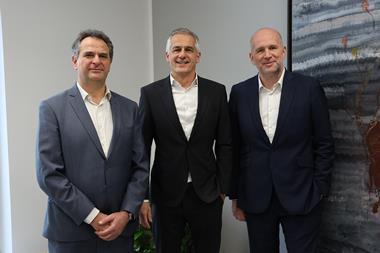It’s quiet days for the Australian private equity sector at the moment. Australian private equity fund managers have seen strong fundraising capabilities, increasingly partnering with global investors instead of local pension funds, but portfolio investment is flat and well-priced opportunities hard to come by.
“Anecdotally, there’s been some increase in activity in the last few months,” says Katherine Woodthorpe, CEO at the Australian Private Equity and Venture Capital Association. “The beginning of this financial year, from July 2012 onwards, things were still quite flat but they seem to have gained some momentum in the last few months and we’re hearing of more activity.”
Portfolio investment trends were subdued in 2012. Investments by venture capital and private equity funds in FY2012 fell by 24% to A$2.9bn ($3bn) compared with the previous year, as local mergers and acquisition activity remained flat. The number of managers completing deals was the lowest in the last ten years.
“Money is coming in and is being invested but the mergers and acquisitions marketplace at the moment is slow,” says Woodthorpe. “I think it is that these times make vendors nervous. Even though the economy is strong, the average mid-market vendor doesn’t necessarily have to sell at a certain time.”
Relatively quiet market
Divestment activity in FY2012 was also relatively quiet, with 51 companies fully/partially divested compared to 71 companies in FY2011. The average length of ownership of the investee firms for those that had been disposed of was 48 months, according to the Deloitte Access Economics Economic Contribution of Private Equity in Australia report, released in March. The report surveyed 18 private equity firms that account for around 70% of total private equity funds under management in Australia.
Woodthorpe says: “The mid-market generally is the engine room of Australian private equity, even though they’re not big brand names in the way of some of the bigger names and the deals don’t get into the press much. But that’s where the bulk of current discussions has happened.”
As at 30 June 2012, Australian PE funds had total funds under management of A$26.5bn, with 320 companies in all PE portfolios combined. Overall deal activity in 2012 was lower than the previous year but vendor-buyer price expectations and more realistic company valuations were expected to result in an attractive buying environment for VC and PE firms with capital to invest, according to AVCAL.
Woodthorpe says the same sorts of pressures were being encountered by PE funds globally, arising from financial market volatility, economic instability and regulatory reforms. These changes were contributing to the ongoing consolidation of the industry on a global scale, and Australia was not exempt from this impact.
Australian domestic PE investors were still actively looking for opportunities but they’re more cautious about how much they pay in a sluggish domestic economy where growth prospects for potential companies are no longer as clear cut as they once were at the height of the China-lead resources boom.
The cheap debt-fuelled leveraged buy-out (LBO) mania which hit Australia just before the global financial crisis is also now long gone. While debt is available, there is a reluctance to pay too much for assets. Some players are concerned an asset price bubble could be forming in the sector.
Ken Marshman, Chairman and Head of Investment Outcomes for JANA Investment Advisors, which has A$245bn under advice, says: “In the current environment we are particularly concerned about the weight of capital chasing deals in the large buyout space as a result of central banks holding rates artificially low and the level of quantitative easing. We believe this could well result in an asset price inflation/bubble which is already being seen in some other unlisted sectors. Consequently, we believe that secondary and small-mid buyout funds are best placed to avoid these issues.”
Good news
The good news for domestic Australian PE funds is that despite some domestic pension fund reluctance to invest, PE funds are still able to access investors. AVCAL said financial year 2012 was the best fundraising year for the local private equity and venture capital industry since 2007/08. Over A$3.3bn was raised by 21 Australian venture capital and private equity funds, a 59% increase from 2011. Overseas investors contributed more than half the total amount raised. This reflected an ongoing trend in recent years.
“In terms of Australia being a good investment destination, our economy is good. I mean, if you’re looking at investment in China, you’re looking at a risk profile there, there are risks associated, whereas Australia is a well-regulated, stable environment to invest,” Woodthorpe says. “Recent fundraising from our general partners has had a higher proportion of overseas investors than ever before.”
On the fundraising front, domestic pension funds who have long been supporters of Australian PE funds, are increasingly by-passing PE funds altogether and deciding to ‘go it alone’ in their PE portfolios. This is on par with the global trend of pension funds taking a direct approach to buying equity stakes in companies when an attractive opportunity is presented. Greater control and lower fees are the main reasons given for this change in approach.
Sam Sicilia, CIO at the A$12bn industry pension fund Hostplus, says the fund’s private equity interests were increasingly away from fund of funds and towards direct investment in underlying companies.
“What we do with our direct investment in PE is find a skilled, smart investor and then give them a parcel of money, and they go ahead and play in the private equity space: innovation, buy-outs, whatever the particular approach is, and by doing that you get rid of the fund of fund structure, which is the expensive component,” Sicilia says. “You get rid of the underlying general partners, and you just pick a handful of them with which your interests are aligned. You don’t worry about capital raising cycles, vintage funds or any other of that nonsense, you give them money whenever you can or want to.”
Hostplus only has a small amount exposed to the strategy at the moment, approximately A$50m, but the investment was scalable. “This is a new strategy for us. If it works out to be fruitful and we can see that it’s working, there will be more, there will be more money given to that investor and there will be more investors like that sought.”
Keeping costs down
According to AVCAL, Australian Bureau of Statistics figures indicate that Australian superannuation funds accounted for 54% of total funds committed to Australian private equity as of June 2012, a large chunk of the PE funds’ investment base.
JANA’s Marshman says super funds tried to keep all costs and fees down for their members, not only to improve net returns but to ensure a fair balance of rewards between all the risk takers in the overall investment management equation. “Many PE structures do not provide for a fair allocation of the risks between manager and equity provider. This has been a major factor constraining the preparedness of Australian funds to make greater commitments to private equity.”
Marshman says the problem with fees was two-fold: the scale of fees, and the formula of fee structures. “Many structures provide for rich rewards for general partners even where returns might be lacklustre and below ‘promised’ returns.”
But AVCAl’s Woodthorpe says Australia looks good on a global comparison of fees. “In terms of fees, although there might be discussion around quantities of fees, if the net results are still delivering, there will be investment. And it’s really about net results. The net returns are there, and even on a global comparator, if you compare Australian private equity (funds) with overseas private equity, we’re looking good.”
But other challenges for PE funds include the lack of liquidity which is a concern for super fund trustees and, by the same token, competing with other unlisted assets. Marshman says: “Most Australian (super) funds have clear illiquidity budgets or limits. So, an important question for these funds is to spend their illiquidity budget wisely. There have been other areas for spending this budget which are lower risk and lower cost, and potentially longer term maturity as well. As such, PE has not been the primary focus since the GFC.”
Credit markets, infrastructure and property ownership had provided solid returns at lower cost, greater transparency, more aligned risk/reward structures. “How long these other diversifying assets will continue to be priced attractively remains to be seen,” Marshman adds.
But Marshman points to the important diversification benefits of PE for super fund portfolios. “Notwithstanding comments re cost and illiquidity, there is growing interest in some areas of private equity. This arises from the limitations of the public markets to deliver stable returns and good investment governance. Market price volatility in public markets may result in unreasonable levels of volatility in returns, not justified by the overall stability of the underlying cash flows of many of those businesses.”
Portfolio allocation
Australia’s A$82.4bn Future Fund was intending to increase its portfolio allocation from 6.4% of the fund’s total assets, or A$4.895bn, to a target allocation of 8% by June 2013, according to its 2012 annual report. As at 31 December, the fund had increased its allocation to PE to 6.8% of the portfolio, with A$5.6bn invested.
The Future Fund said it was looking to make further allocations to its distressed opportunities strategy in both the US and Europe. It said that while it was still being opportunistic in developed markets, its growth equity strategy was emerging markets-focused, “particularly where bank financing is not a viable alternative for small and rapidly growing companies.”
On PE fund manager performance, the AVCAL says the Cambridge Associates LLC/AVCAL index rose by 2.95% net of fees in the twelve months to 30 June 2012, outperforming the S&P/ASX 300 index by 10% over the same period. The index’s medium to long term results remained steady, with returns of 9.08%, 1.76% and 6.60% over the 3, 5 and 10 year horizons respectively. In contrast, the ASX 300’s returns fluctuated between 5.56%, -4.15% and 6.94% over the corresponding horizons.
Private equity’s question is also the economy’s question more broadly: where is the next growth story. One emerging global theme could see more activity in the PE sector. Food security concerns globally are pushing overseas investors, in particular overseas pension funds, to look at Australia’s agriculture sector as a promising opportunity.
But these are not easy businesses to run, and many Australian farms are struggling to make money themselves, with difficult environmental conditions making short term profiting from these businesses hard.
An additional sore point for PE funds is that global investors are going into Australian assets themselves. The Canadian Pension Plan which has A$165bn under management, is establishing an agricultural programme which will aim to find Australian farmland to purchase directly.
PE funds are looking at possible opportunities arising from a collapse in resource commodity prices, with many small ASX listed mining companies now under pressure share price pressure. But again, the pricing of that opportunity may rest on the assumption of a rebound in China’s demand for Australian resources.
And for venture capital, government programmes continue to inject significant sums into the sector. In March, the Australian Government’s Innovation Investment Fund (IIF) announced it will invest at least A$200m via three new venture capital funds under the latest tranche of the IIF. Half of the Government funding would be matched dollar for dollar by private sector investors in Carnegie Venture Capital Pty Ltd (A$40m), and GBS Venture Partners Pty Ltd and Innovation Capital Associates Pty Ltd (A$30m each).
The recent Innovation Statement also put forward reforms to the Early Stage and Venture Capital Limited Partnership (ES/VCLP) structures to clarify rules for investors. Innovation Australia will have the discretion to allow ESVCLPs to exceed the 20% foreign investment cap, provided the investment has a material national benefit associated with the commercialisation of Australian research and development. As at 30 June 2012, Australian venture capital funds managed A$2.9bn.












No comments yet